
Cycle Japan Itinerary
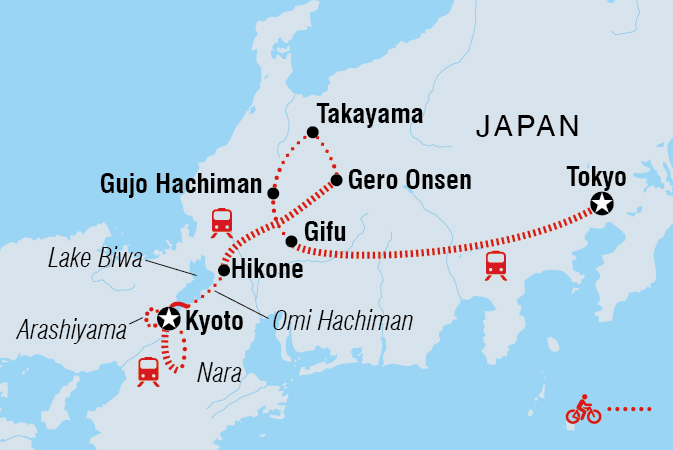


Konnichiwa! Welcome to Kyoto. Serving as Japan's capital and the emperor's residence from 794 until 1868, Kyoto is the spiritual centre of Zen Buddhism and one of the most historically important cities in Japan. Unlike many of its neighbours Kyoto escaped destruction during World War II and thousands of temples, shrines and other historically invaluable structures survive in the city today. This adventure begins with a welcome meeting at 6 pm where you'll meet your tour leader and fellow travellers. You can arrive at any time during the day as there are no activities planned until this important meeting. Afterwards, head out on an evening walk before enjoying a welcome dinner.
If you arrive early, Kyoto offers a myriad of options to explore. For a taste of Shogun life, head to the World Heritage-listed Nijo Castle, perhaps the best surviving example of castle palace architecture from Japan's feudal era. See how the Emperor lived at the Sento Imperial Palace within Kyoto Imperial Park, an attractive park in the centre of the city. Or for a quieter moment, you may wish to contemplate silently in one of the serene karesansui (Zen gardens) that dot the city.
After breakfast and a safety talk by your leader, familiarise yourself with your bike and take a short test ride before cycling with the group west from our ryokan to the Katsura River, then north along a dedicated cycling path past traditional houses and community gardens to the ancient imperial resort of Arashiyama. Time allowing stop off for a coffee break in Arashiyama, well-known for its gorgeous bamboo forests. After a caffeine hit and a chance to soak up the peaceful atmosphere, ride on to Tenryuji Temple and Ryoanji Temple, with its famous white Zen rock garden. Pause here to contemplate the sound of one hand clapping and then move on to contemplate some lunch.
Afterwards, cycle east across the north end of Kyoto and then onto the Path of Philosophy and the Higashiyama area before returning to our accommodation. The ride today will be gentle, with only slight elevation on the roads as we head into Arashiyama. We start with a 5 kilometre ride on a main road, then follow dedicated bicycle paths and secondary roads for the rest of the day.
On arrival back into Kyoto, take an evening orientation tour of Kyoto's Gion district. Observe Geisha and Maiko (apprentice Geisha) from key spots in the city's old back streets and be tempted by some of the area's great local restaurants, perhaps doubling back to visit for dinner after the tour has ended.
Kyoto’s streets are laid out in a convenient grid pattern, which is unusual for Japanese cities. In the 8th century, imperial city planners copied the grid layout of Chang’an (now Xian), the capital of the Tang Dynasty China. That’s not the only benefit we reap from the Tang Dynasty today – two well-known Tang engineers, Ma Jun and Zhang Heng, invented the mechanical gear system used by the bikes we ride around this easy-to- navigate city. Arigato Tang Dynasty!
The cycling route takes you through beautiful Japanese scenery on a dedicated riverside cycling path from the old capital of Kyoto to the even older capital of Nara. Here, you'll see the Giant Buddha housed in the largest wooden structure on the planet. This city is well known for its Todaiji Temple and its cute, free-roaming wild deer. Head south along the river for most of the day, stopping briefly at Nagarebashi Bridge, a 356-metre wooden bridge that is a popular film location for samurai dramas.
Return by train to Kyoto.
Leave Kyoto behind and transport to nearby Otsu, located on the shores of the sprawling Lake Biwa. Today is a long but relaxed ride as you cycle around the mostly flat shoreline of Japan's largest freshwater lake. Enjoy a lunch stop Omi Hachiman, a tiny historic trading town on the ancient Nakasendo trading route, with its well preserved old buildings and central canal before ending your ride in lakeside Hikone.
While small, Hikone is home to the feudal Hikone Castle, one of only five castles in Japan designated as a national treasure. If you have time it is well worth the visit. Otherwise enjoy a free evening wandering the streets are dining at one of the local cafes and restaurants.
Start the day early and take the train approximately 4 hours north into the heart of the Gifu Prefecture to the hot spring town of Gero Onsen. After checking in to your hotel its time to step back in time and check out the the Gassho Village, an open air museum of farmhouses. These centuries-old traditional steep roofed houses and traditional folk art give you an insight into a Japan far removed form its bustling cities. Take some time to explore then enjoy gather with your fellow cyclists for an included dinner in the evening.
Today its back on your bike, following the Hida River as it winds it's way between the rolling green hills north to Takayama. Today's journey takes you through some beautiful scenery as you ride the quiet roads up the valley, flanked by wooded green hills and mountains on both sides.
Arriving into Takayama (also known as Hida-Takayama) in the early afternoon you will have ample time to explore this fascinating small city. Be sure to visit the beautifully preserved old town, dating from the Edo era. The area is home to traditional sake breweries, handicraft shops, and local food stores, offering a unique insight into Japanese culture and lifestyle, and is a great place to unwind after a good day cycling.
Rise early and head out to the famous Takayama morning market, one of the biggest morning markets in Japan. Cruise the many shop and stalls selling everything from fruits and spices to craft wares then it's time to saddle up for the ride to Gujo Hachiman. At 70 kms/44 miles this is the longest ride of the trip, but all of the climbing is done first, giving you 40kms of mostly downhill cruising on the quiet roads that meander through the mountainous landscape of the island's winter skiing region. On arrival you will have ample time to wander the quiet streets and canals of this small traditional town and perhaps take in it's historical centrepiece, the 16th century Hachiman Castle.
Today is your last rural ride as you cycle the undulating but mostly downhill from Gujohachiman to the riverside city of Gifu. While now a modern city Gifu has had a significant impact on Japanese history since the 15th century. Discover a bit of history yourself and stretch your walking legs on a visit to Gifu Castle on nearby Mount Kinkazan - the views are spectacular! The rest of the day is free for you to perhaps visit the museum dedicated to the epic Battle of Sekigahara, further explore or simply relax after a long but rewarding ride.
No trip to Japan is complete without experiencing the country's legendary train system. Swap your bike for a train and watch the scenic landscape fly by on a journey (approx. 5 hours) to Tokyo. Hit the streets on arrival for a night-time orientation walk. Explore the contemporary centre of town as well as the old streets, and feel the hum of modern life in this famous city.
Riding distance: None
Hold on to your helmets because there's a real treat today – two rides in one day! Get a better feel for the different areas of the city this morning as you cycle along the same local paths Tokyoites use to cut through the city. There are surprises, both old and modern, waiting at every turn along the way and architecture aficionados will be in heaven.
Along the way we visit many of Tokyo’s most famous landmarks; the first ride passing along the cherry tree lined paths of Ueno Park, home of Tokyo’s most popular museums and temples, Akihabara gadget town, the ‘Japan Bridge’ district of Nihonbashi, and upmarket the district of Ginza with its dazzling array of high-end shops, galleries and cafes.
We break between rides to enjoy lunch at the famous Tsukiji Outer Fish Market before commencing our second ride to see such luminaries as the Edo-era Imperial Palace, the 333m-high Eiffel Tower lookalike Tokyo Tower, the elegant Hachimangu Shrine, Tsukishima (Moon Island), the manmade island in Tokyo Bay, and of course the Skytree Asakusa, at 634m the tallest building in all of Japan
Later enjoy an included farewell dinner then take the rest of the evening to spend as you see fit - enjoy a quiet night, let loose at karaoke, or walk and drink your way across the city with your local leader.
Sadly it's time to say farewell to this great Japanese adventure. There are no activities planned for the day and you’re able to depart the hotel at any time. Check-out time is 11 am but if you're departing later, you can arrange luggage storage at the hotel. If you have time why not check out the amazing Urban Adventures on offer in this eclectic city. Read more at: www.urbanadventures.com/en/tokyo

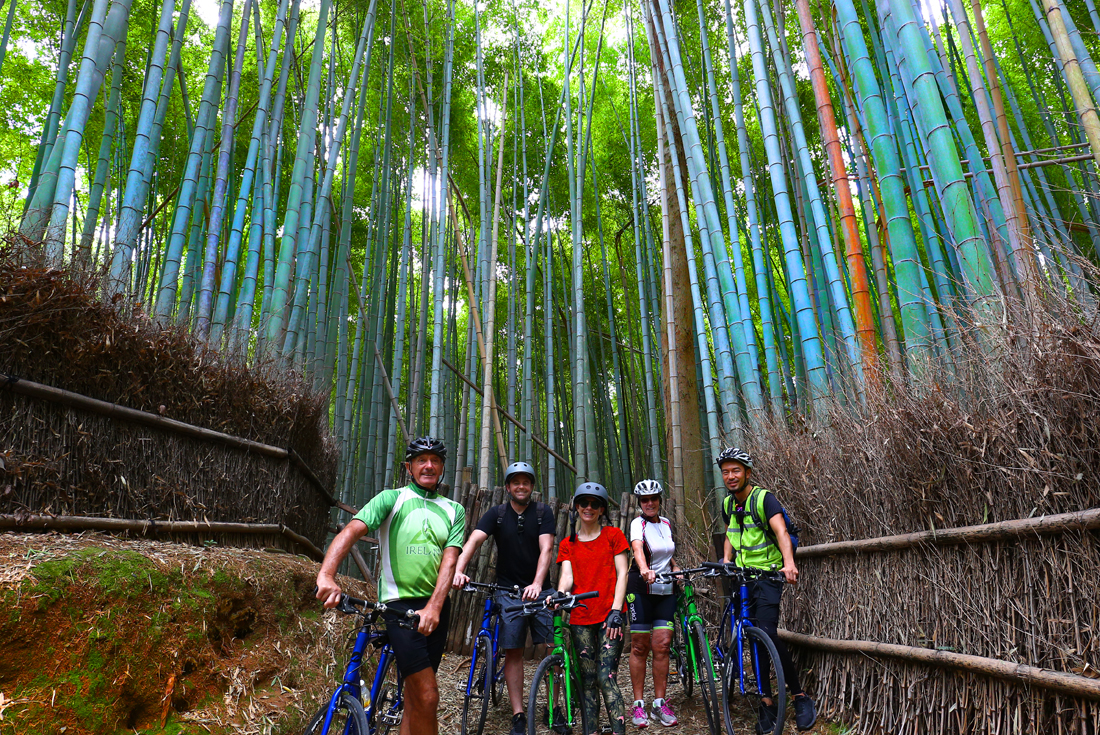
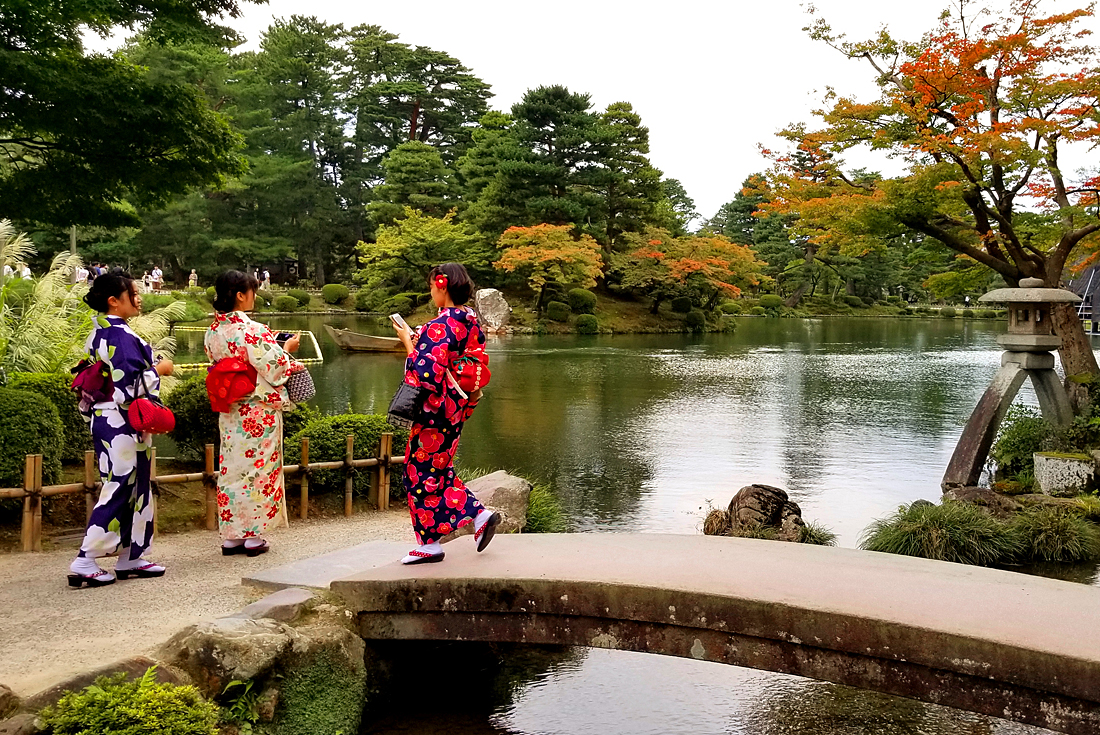

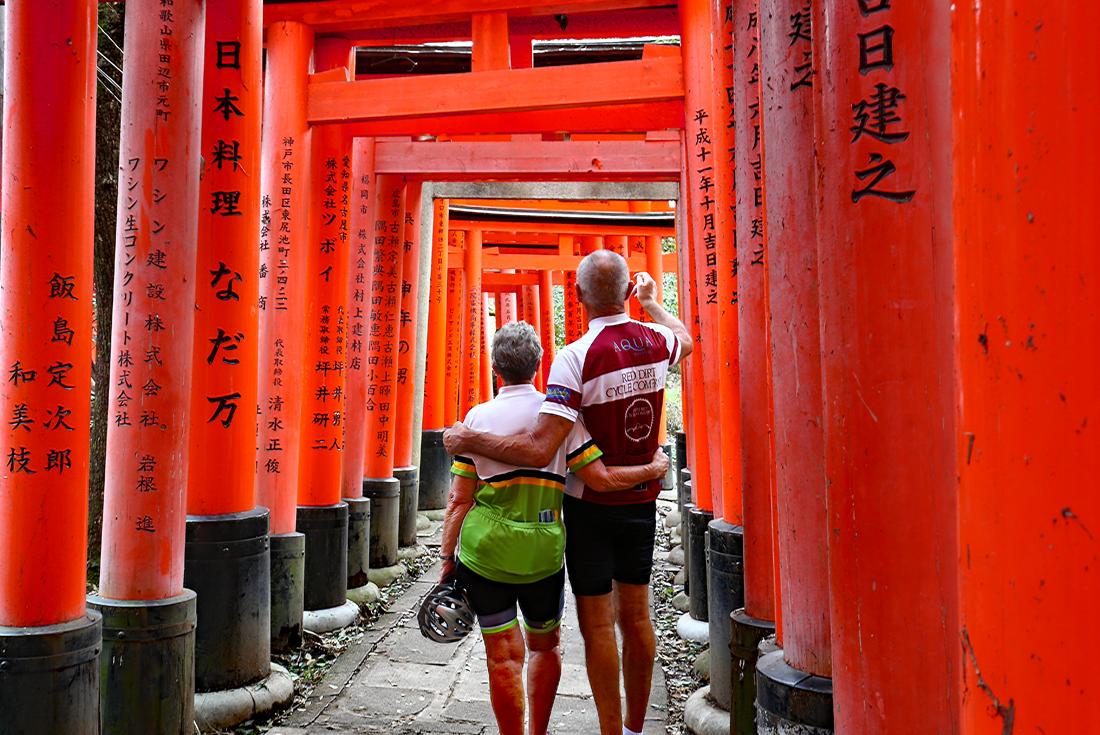
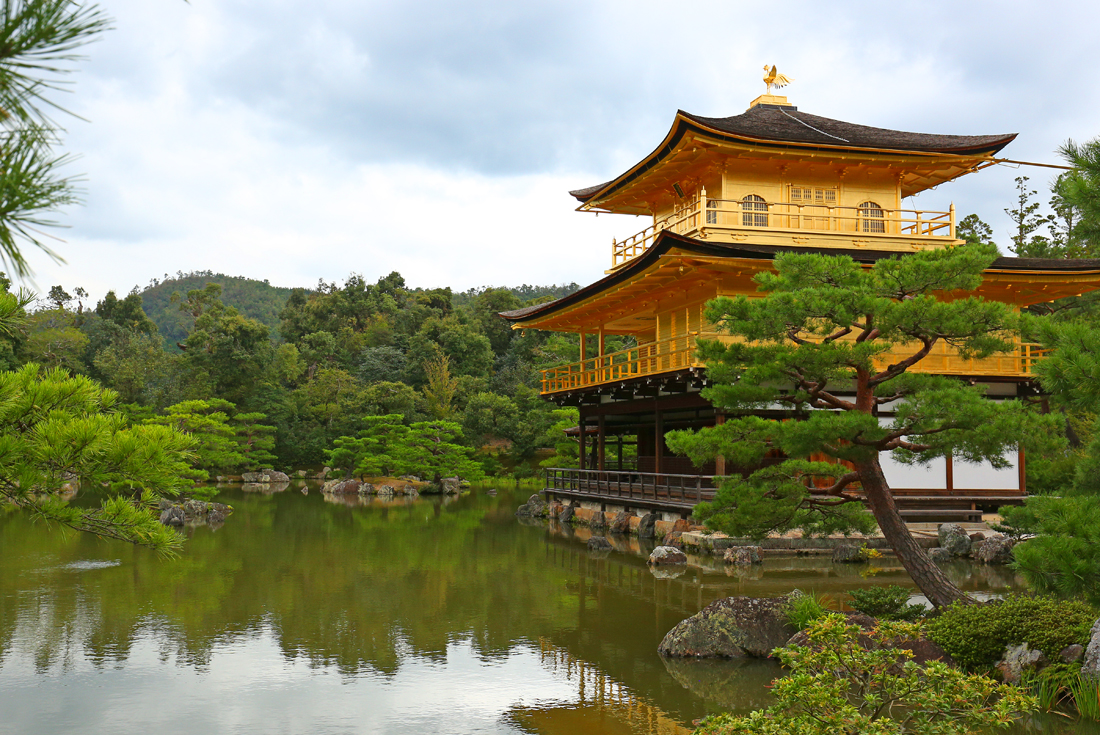



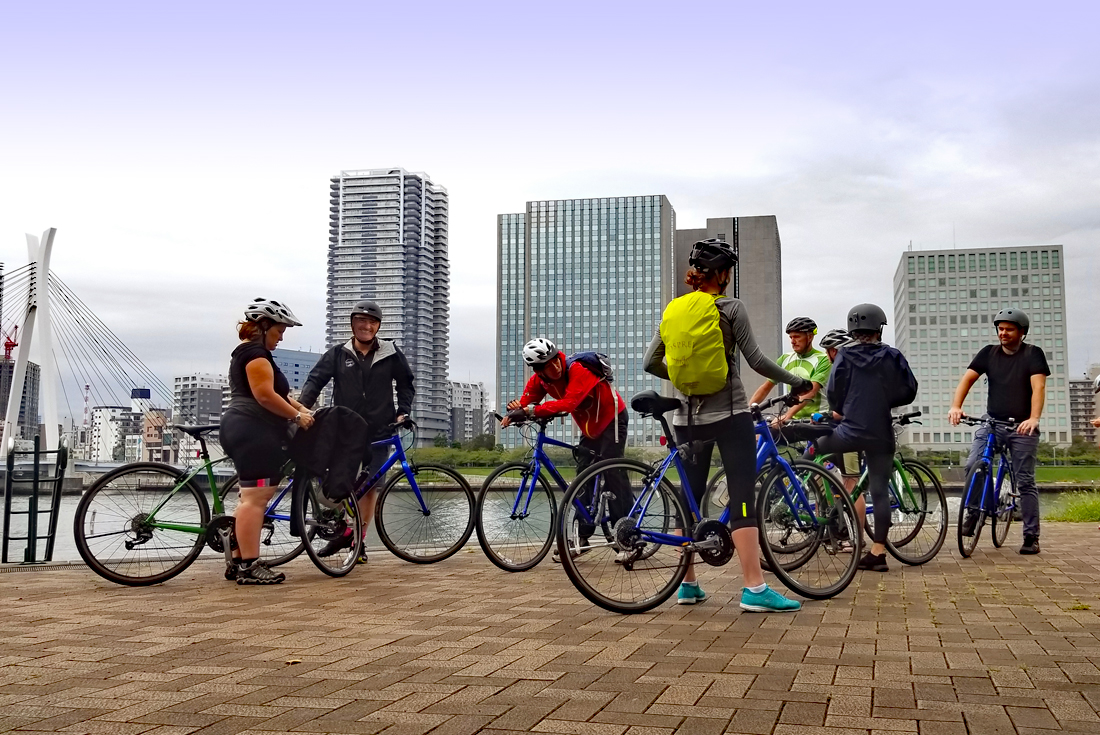
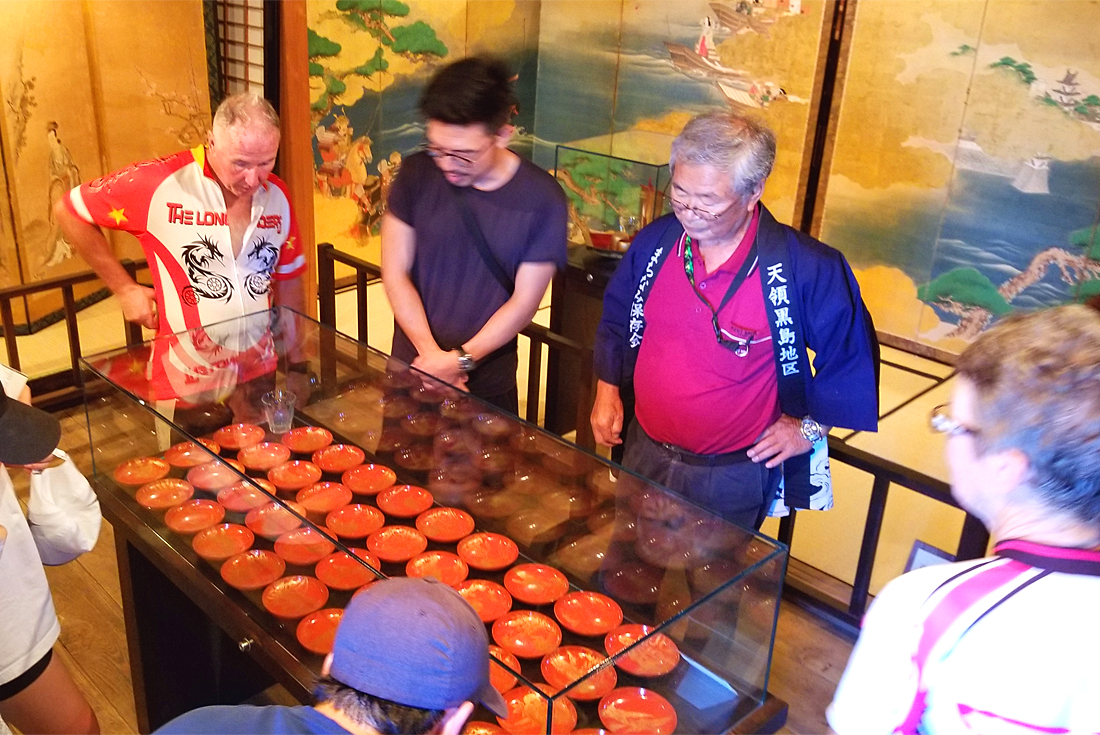

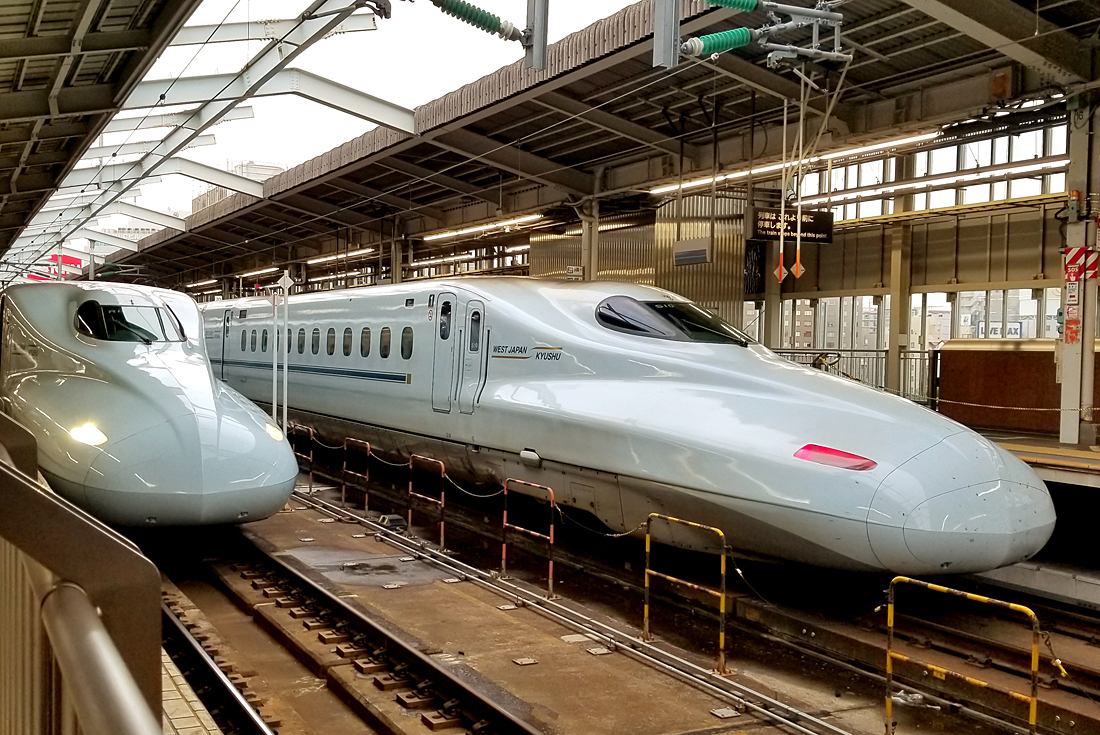

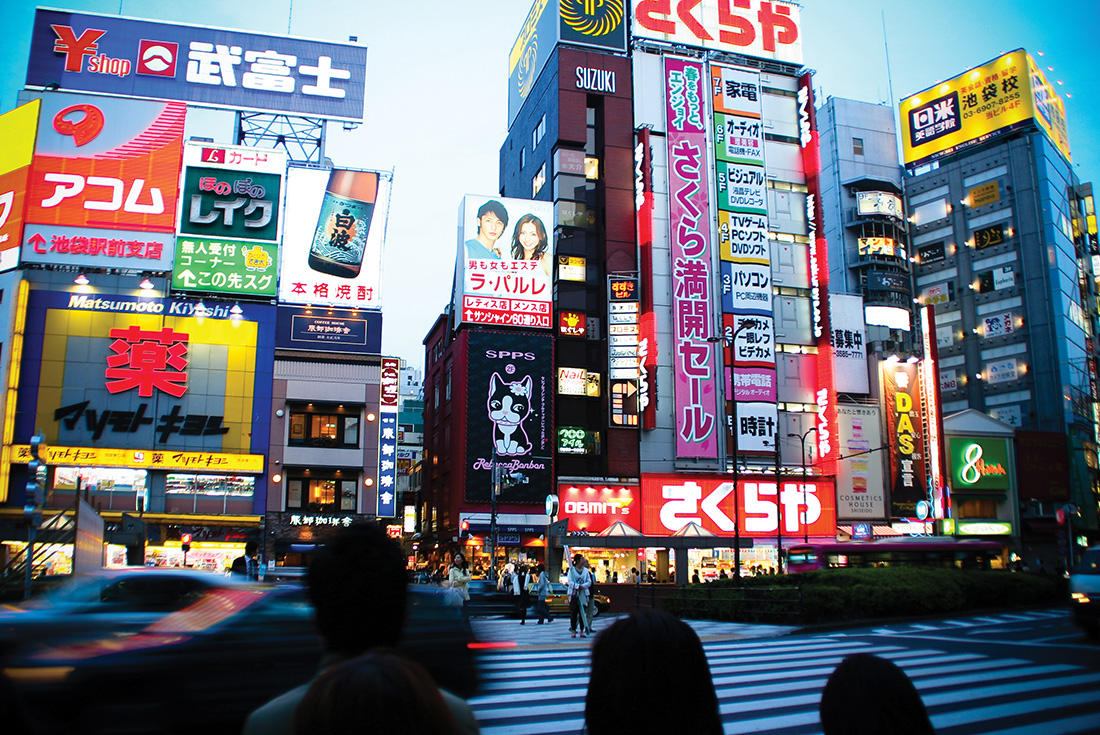
9 days guided & vehicle-supported cycling
9 Days Included Bicycle Hire
Kyoto - Gion District walk
Kyoto - Arashiyama Bamboo Forest
Nara - Todaiji Temple
Omi Hachiman historic village visit
Gassho Village open air museum
Takayama morning market visit
Gifu Castle visit
Tokyo - Sensoji Temple
Tokyo - Tsukiji Fish Market
Cycling allows you to get closer to the real Japan – from bicycles to Pokemon, serene temples to the organised chaos of the big cities, this classic adventure has it all.
Choose to end rewarding days in the saddle with amazing Japanese feasts of sushi, unagi, tempura or even fugu, all washed down with a traditional sake or Sapporo beer.
Ride both bikes and trains for the ultimate change of pace.
Cycle through peaceful landscapes that show a land far from the big city lights of Tokyo.
Hearton Hotel, 405 Funaya-cho, Nakagyo-Ku, Kyoto-shi , Nakagyo Ku, Kyoto, JAPAN, Phone: 081 752221300
Hotel Sunroute Asakusa, 1-8-5 Kaminarimon, Taito-ku, Tokyo 東京都台東区雷門1-8-5, Tokyo, Tokyo, 111-0034, JAPAN, Phone: +81 338471511
1. It is very important that you provide your height at time of booking so we can ensure that you have the appropriate sized bicycle when your trip starts. If you do not provide your height ahead of arrival we cannot guarantee a suitably sized bike for you.
2. A single supplement is available if you’d prefer not to share a room on this trip. The single supplement excludes Day 5 and Day 7 where you will be in shared accommodation and is subject to availability. Please speak to your booking agent for further information.
3. It is essential that you pack light and compact for rail travel in Japan. Luggage size restrictions apply. Please review the Packing section of the Essential Trip Information for more details.
4. Bike helmets are compulsory on this trip. Please bring your own bike helmet from home. Helmets can be purchased in Kyoto if needed.
5. An e-bike option (at additional cost) may be available on this trip. We have limited numbers of these bikes available, and they are an 'on request' basis only.
6. Due to operational restrictions clients are unable to bring their own bikes on this trip.
7. Under Japanese law, all cyclists must have third-party liability insurance in the prefectures we ride through. As many travel insurance policies do not include this we will enrol you in local cover. To do this, we’ll need to collect your address and phone number at the welcome meeting.
While we always endeavour to provide the best possible holiday experience, due to the nature of travel and the areas we visit sometimes things can and do go wrong. Should any issue occur while you are on your trip, it is imperative that you discuss this with your group leader or local representative straight away so that they can do their best to rectify the problem and save any potential negative impact on the rest of your trip.
We recognise that there may be times when your group leader or local representative may not be able to resolve a situation to your satisfaction - if this is the case, please ask the group leader or local representative to speak to their direct manager.
You may also choose to provide details in your online feedback, which we ask you to complete within 30 days of the end of your trip. Please do be aware that it is very difficult for us to provide any practical help after the trip is completed, so informing us while still travelling will give us the opportunity to resolve the issue in real-time., For general contact details please use the following page: https://www.intrepidtravel.com/contact-us, In case of a genuine crisis or emergency, you can reach our local office on the numbers below:
, For general enquiries or questions about your booking, please contact your agent or adventure specialist, or visit us at www.intrepidtravel.com/contact-us
In case of a genuine crisis or emergency, you can reach our local operator on the number below:
, Intrepid local operator: Available for phone call on +81 50 5809 5404
While the cycling distances on this trip are relatively short (anywhere from 10 to 80 km / 6 to 50 miles of cycling each day) the terrain of the Gifu Prefecture is naturally hilly and the climate can vary dramatically. Most people with a reasonable level of fitness will enjoy the trip, but you will always have the support vehicle on hand if you need to take a break for an hour or a day., To complete this trip it is important that you are confident and competent in riding a bicycle, both solo and in a group environment., While we always aim to ride to our next accommodation, outside of the main cities a support vehicle will also be with you at all times. In Japan, we can fit a maximum of four cyclists in the support vehicle., On this trip we have a single leader that rides with the group, and another that drives the support vehicle (acting as a back-marker where needed). Where the vehicle cannot travel directly with the cyclists (e.g. a cyclists-only path) your leader will assign a person from the group to act as a back-marker., If you feel like doing all the riding but with less effort we have the option of hiring an electric bike (e-bike) on this trip. Limited sizes are available so book quickly!, When we aren't cycling on this trip, we primarily use public transport, which is efficient and convenient in Japan. Please pack light and compact as you will be expected to transport your luggage between train stations and to hotels, which can include going up and down multiple flights of stairs in crowded areas., Double rooms in Japanese hotels can be smaller than you may be used to (e.g. 20 sqm). Every effort will be made to accommodate double room requests. However, during busy periods, there may be occasions when we are unable to offer a double room, so a twin room will be provided.
Cycling allows you to get closer to the real Japan – from bicycles to Pokemon, serene temples to the organised chaos of the big cities, this classic adventure has it all., Choose to end rewarding days in the saddle with amazing Japanese feasts of sushi, unagi, tempura or even fugu, all washed down with a traditional sake or Sapporo beer., Ride both bikes and trains for the ultimate change of pace., Cycle through peaceful landscapes that show a land far from the big city lights of Tokyo.
All Intrepid cycling group trips are accompanied by one of our cycling leaders. The aim of the group leader is to take the hassle out of your travels and to help you have the best trip possible. Intrepid endeavours to provide the services of an experienced leader however, due to the seasonality of travel, rare situations may arise where your leader is new to a particular region or training other group leaders.
Our cycling leaders are all passionate cyclists, as you’d expect, but they also go through some pretty rigorous cycle-trip specific training. Each one has undergone on-road training and supervision and knows how to do safety checks, basic repairs and emergency first-aid. And at the end of the day they’re still regular Intrepid leaders, which means they will provide information on the places you are travelling through, offer suggestions for things to do and see, recommend great local eating venues and introduce you to our local friends. While not being guides in the traditional sense you can expect them to have a broad general knowledge of the places visited on the trip, including historical, cultural, religious and social aspects. At Intrepid we aim to support local guides who have specialised knowledge of the regions we visit. If you were interested in delving deeper into the local culture at a specific site or location then your leader can recommend a local guide service in most of the main destinations of your trip., On this trip we have a single leader that rides with the group, and another that drives the support vehicle (acting as a back marker where needed) There may be times when a client is asked to be the back marker, ensuring no one else rides behind them, if the vehicle cannot travel directly behind the group. Your leader will discuss this at the initial group meeting.
We take safety seriously on all our trips, but cycling tours deserve a few special considerations.
HELMETS:
Helmets are compulsory and we do not allow anyone to ride without one (including our own staff!). You can bring your own, or purchase one that meets international safety standards on the ground. Your leader can assist with this.
FOOTWEAR
For safety reasons we strongly recommend that you wear shoes that cover the toes while riding.
SUPPORT VEHICLES
We usually have a support vehicle following us if first-aid is ever necessary or people are feeling too tired to ride. Please note that the maximum number of cyclists we can fit in the support vehicle is 6.
BIKES:
Our bikes are serviced regularly, and we get them checked by experts before each and every trip. Should you choose to bring your own please note that while we are happy to assist where we can with repairs you are responsible for the safety and suitability of your own equipment.
TRAFFIC AND DRIVING ON THE OTHER SIDE OF THE ROAD:
Depending on where you come from please note that drivers in this part of the world may drive on the opposite side of the road from what you are used to. Look both ways before crossing any road. Traffic can be a little more chaotic than you might be used to at home. Be aware!
There are times when traffic conditions make sections of our planned riding route unsafe – in this instance we will use the support vehicle.
WEATHER
Due to inclement weather posing a serious health or safety issue there may be times when we use the support vehicle instead of doing the planned ride. We will endeavour to reroute if possible but at times may have to cancel the planned ride., On this trip we have a single leader that rides with the group, and another that drives the support vehicle (acting as a back marker where needed). Where the vehicle cannot travel directly with the cyclists (e.g. a cyclists-only path) your leader will assign a person from the group to act as a back marker to help ensure that the group stays together., TRAVEL ADVISORIES & ALERTS
We recommend that you check your government's foreign travel advisory for the latest information about the destination before you travel. You will also need to ensure that your travel insurance covers you for all destinations and activities on your trip. We also recommend saving the phone number for emergency consular assistance for your government’s consulate in the destination/s you’ll be travelling. Links to travel advisories and any current travel alerts for our trips can be found here: https://www.intrepidtravel.com/travel-alerts
PERSONAL SAFETY
Ensure you have a secure method of carrying your passport, phone, credit cards and cash while travelling such as a money belt. Leave all other high value items, including jewellery, at home Use safety deposit boxes at hotels to store your valuables when available and ensure your luggage is lockable. Be aware of the risk of pick-pocketing and petty theft. Exercise caution when walking at night, don’t walk alone and stick to well-lit streets wherever possible. Be vigilant on public transport and look out for your fellow travellers. Take precautions such as carrying your bag in front of you and never leaving personal items unattended.
LGBTQIA+ TRAVELLERS
Intrepid welcomes all LGBTQIA+ customers on our trips, however we operate in parts of the world that are less accepting. We support LGBTQIA+ customers to travel to these destinations and are committed to ensuring they face no discrimination on any part of the trip we control. We recommend you visit Equaldex (https://www.equaldex.com/) and your government's foreign travel advice for LGBTQIA+ travellers when choosing your trip., https://www.intrepidtravel.com/safety-guidelines, SEAT BELTS:
Please be aware that local laws governing transportation safety may differ from those in your home country and not all the transport which we use is able to provide seat belts., FIRE PRECAUTIONS
Local laws governing tourism facilities in this region may differ from those in your home country and accommodation we use may not have a fire exit, fire extinguishers or smoke alarms., PETTY THEFT AND PERSONAL SAFETY
While travelling there is always the risk of pick-pocketing and petty theft, particularly in the more touristy cities. We recommend that you exercise caution when walking alone at night and encourage you to walk together and only on main, well-lit thoroughfares. Be particularly vigilant on public transport. Simple measures like carrying your day pack on your front, not hanging your bag over the back of your chair or on the floor and wearing a money belt will reduce any chance that your valuables should go missing.
PASSPORT
You’ll need a valid passport to travel internationally and most countries require your passport to have a minimum of 6 months validity, so remember to check the expiry date.
We need your passport information to get everything ready for your trip so it’s important that the information on your booking matches your passport exactly. Please take care to provide the correct details. We recommend carrying a copy of the photo page of your passport while travelling and leaving a copy at home with family or friends.
VISAS & ENTRY REQUIREMENTS
Many countries require a visa and obtaining the correct visa for your trip and any countries you may transit through is your responsibility. We recommend you check your visa requirements as soon as you have booked your trip. This will ensure you have time to prepare your documents and for your visa application to be processed. You can check the entry requirements for your nationality on your government's foreign travel advisories, consular websites or on our page here: www.intrepidtravel.com/visa-entry-requirements
Information not available.
Validity: 01 Jan 2026 to 31 Dec 2026
GENERAL HEALTH
All travellers need to be in good physical health in order to participate fully on this trip. For the safety and wellbeing of yourself and others, if you are unwell prior to travelling, please stay at home and contact us to make alternative arrangements.
When selecting your trip please make sure you have read through the itinerary carefully and assess your ability to manage and enjoy our style of travel. Please note that if in the assessment of our group leader or local representative a traveller is unable to complete the itinerary without undue risk to themselves and/or the rest of the group, we reserve the right to exclude them from all or part of a trip without refund.
You should consult your doctor for up-to-date medical travel information or for any necessary vaccinations before departure. We recommend that you carry a first aid kit as well as any personal medical requirements in their original packaging as they may not easily be obtained while travelling. If you are carrying medication, ensure you check your government's foreign travel advice for any local restrictions or requirements.
While travelling with us you'll experience the vast array of wonderful food available in the world. Your group leader will be able to suggest restaurants to try during your trip. On our camping trips we often cook the region's specialities so you don't miss out. To give you the maximum flexibility in deciding where, what and with whom to eat, generally not all meals are included in the trip price. This also gives you more budgeting flexibility. As a rule our groups tend to eat together to enable you to taste a larger variety of dishes and enjoy each other's company. There's no obligation to do this though., FOOD IN JAPAN
The Japanese daily diet contains gluten (ie. in flavourings such as soy sauce) and seafood (dashi, or fish stock, is the basis of most dishes, even vegetable ones), so we highly recommend that vegetarians, vegans and coeliacs do their own online research before travelling about some of the options that might be available to them. While our leaders will assist you whenever they can, there may be some included meals that are fixed in advance and not flexible, such as those included at ryokans, and cannot be modified for different diets. For those suffering from particular food allergies, your group leader will endeavor to disclose to their fullest knowledge the main ingredients in dishes being consumed. It is, however, still your personal responsibility to ensure that you do not ingest any foods to which you are allergic.
Food and drink are such a high part of Japanese culture. Here are some links to get your tastebuds tingling:
https://www.intrepidtravel.com/adventures/japan-convenience-store-food/
https://www.intrepidtravel.com/adventures/traditional-tokyo-alleyways-locals-guide/
https://www.intrepidtravel.com/adventures/eat-and-drink-like-a-local-in-japan/
https://www.intrepidtravel.com/adventures/vegetarian-vegan-travel-japan/
, All meals on this trip (included or optional) are primarily based around Japanese food, including breakfast. We endeavour to experience all styles of food but rice, fish, noodles and soy-based foods are regularly included. Western-style food can be challenging to come by, particularly in the rural areas and small cities. We make regular stops at convenience stores where you can usually purchase a limited amount of seasonal fruit (apple, banana, etc.) or bread-based foods. Please inform your booking agent at the time of booking if you have any specific dietary requirements, as adjusting the menu on an ad hoc basis is very difficult for our food providers given the lack of Western-style food options they have available to them.
SPENDING MONEY
When it comes to spending money on the trip, every traveller is a little different. You know your spending habits better than we do, so please budget an appropriate amount for things like optional meals, drinks, shopping, optional activities, and laundry. Make sure you have read the itinerary and inclusions thoroughly so you know what is included in the trip price and what you may need to pay for while travelling. , JAPAN
The local currency in Japan is the Japanese Yen (JPY). Cash is still the most common form of payment in Japan. ATMs are commonplace, so obtaining cash is easy. Credit cards are generally accepted at departments stores and large restaurants., TIPPING
Tipping can be an appropriate way to recognise great service when travelling. While it may not be customary in your home country, it is an entrenched feature of the tourism industry across many of our destinations and is greatly appreciated by the people who take care of you during your travels. It is always best to avoid tipping with coins, very small denomination notes, or dirty and ripped notes, as this can be regarded as an insult rather than the goodwill gesture it is intended to be., YOUR GROUP LEADER OR LOCAL REPRESENTATIVE
Tipping your group leader or local representative is highly appreciated if you feel they’ve provided outstanding services throughout your trip. The amount is entirely a personal preference; however, as a guideline, the recommended amount is 4-7 USD or EUR per traveller per day (in a currency relevant to your destination). Of course, you are free to tip more or less as you see fit, depending on your perception of service quality and the length and involvement of your group leader or local representative on your trip., CONTINGENCY FUNDS
We try to plan for every eventuality, but there are still some things beyond our control. We reserve the right to change an itinerary after departure due to local circumstances or a Force Majeure Event. In such emergency circumstances, the additional cost of any necessary itinerary alterations will be covered by you. Please note we are not responsible for any incidental expenses that may be incurred as a result of the change of itineraries including but not limited to visas, vaccinations or non-refundable flights. Make sure you have access to an extra US$500 for emergencies (e.g. severe weather, natural disasters, civil unrest) or other events that result in unavoidable changes to the itinerary (e.g. transport strikes or cancellations, airport closures). Sometimes these things necessitate last-minute changes to enable our trips to continue to run, and as a result, there may be some extra costs involved. The recommended amount is listed in USD for the relatability of universal travellers, however, local currency may be needed once in the country to cover these costs.
LUGGAGE IN JAPAN
On this trip you will need to carry your own luggage for up to 30 minutes at a time. Train stations are quite complex and usually require climbing a lot of stairs, especially when doing a quick transfer from train to train. Elevators aren't always available and cannot accommodate many people at a time, so if you bring a suitcase, please ensure you are able to lift and carry it up and down stairs yourself without difficulty. Our ryokans allow suitcases, but you'll need to carry it onto the tatami floor in the room, instead of wheeling it. A backpack is often preferred by travellers for these reasons.
We recommend that you keep your main luggage weight around 15kg and certainly no more than 20kg.
LUGGAGE SIZE RESTRICTIONS ON JAPANESE TRAINS
Luggage allowances for train travel are calculated by adding the length, width and height together. We recommend your main piece of luggage does not exceed 159cm.
Luggage between 160cm and 250cm requires pre-booking additional luggage space for an additional fee. This can be difficult to secure given how busy Japan's rail system is. Luggage over 251 cm will NOT be permitted on Shinkansen trains.
If you have oversize luggage you will need to use luggage forwarding services. Additional charges will apply. Please speak to your leader if you need to utilise this service.
Japanese trains don’t have large luggage racks for big suitcases so it's best to pack as light and small as possible so that you are not blocking aisles or taking up extra seats.
DAY PACK
A day pack for carrying essentials when exploring destinations, as well as for any shorter overnight stays, will be useful.
SEASONAL CLOTHING
Weather in Japan varies greatly between summer and winter so be sure to check whether you’ll need a beanie and thermals or light cotton layers during your visit.
PACKING LIST
Below is a link to our ultimate packing list, a guide to get you started:, https://www.intrepidtravel.com/packing-list, CYCLING
Packing for a cycling tour isn’t that different from any other adventure, but if you want to be comfortable and warm, here are a few bike-specific requirements and suggestions:
• Main piece of luggage – as space in our support vehicle/transport can be limited we request that you bring only a small bag as your main piece of luggage. We recommend a soft-sided bag
• Helmet – these are compulsory, but if you don’t have your own you can often purchase an approved and well-fitted one at the start of the trip (our leaders can assist you with this). There are some destinations where you are unable to purchase appropriate helmets locally so you will always need to bring your own - please check the 'Important Notes' section to see if this is the case.
• Padded bike shorts
• Quick-dry jerseys – you can get away with a few cotton t-shirts but having a few light and breathable jerseys will make your cycling a lot more comfortable, especially in warmer/humid climates.
• Quick-dry socks
• Cycling gloves / Regular gloves – not essential but recommended as padded cycling gloves will make your riding more comfortable and can help protect you in the case of a fall. Regular gloves for those who may not own cycling gloves to keep hands warm in cold wet weather.
• Rain gear – pack a light poncho in case the weather turns when you’re out on the road.
• Light breathable waterproof/windproof outer layers – especially useful for those early mornings or downhill sections when wind-chill becomes a factor.
• Water bottle – we don't provide bottles, but all our bikes have one bottle holder fitted (and a second one can be fitted if required). Please bring a cycling-specific water bottle as other types will fall out of the holders. A Camelbak will make drinking on-the-go easier.
• Sunglasses – well-fitted sports sunglasses help protect against dust, insects and the sun.
• Day pack – our support vehicle will carry your main piece of luggage, but a day pack for snacks and clothes is a good idea.
• Sunscreen – please bring a high protection factor (e.g. SPF50) sunscreen as long days in the saddle mean long exposure to the sun.
• Shoes – normal sports shoes can be worn on all our trips however you may want to consider a flat shoe with a relatively stiff sole as it makes pedalling a lot more efficient. Regular cyclists are welcome to bring their own cycling-specific shoes however we recommend 'mountain bike' style shoes that have grip on the sole rather than ‘road bike' shoes as you will still be walking around while on the rides (cafe/photo/toilet stops, etc). For safety reasons we require that you wear shoes that completely cover the toes while riding.
• Saddles – Our saddles are standard, unisex models –less experienced cyclists may choose to bring your own gel seat cover for added comfort.
• Pedals – all bikes come with flat pedals. Regular cyclists are welcome to bring their own pedals – our leader will assist in fitting them to your bike.
• Bike Lights - we design our Cycling trips so that you are usually riding during daylight hours so do not include bike lights unless a night ride is specifically planned and included in the itinerary. Should you feel more comfortable riding with 'daytime' flights please bring your own and we will be happy to assist in fitting them to your included bicycle.
, WATER BOTTLE
Please bring your own water bottle to refill. Although it can be difficult to avoid bottled water when travelling, please use the water dispensers which are provided on some of our vehicles and at some of our accommodation. When unable to avoid bottled water, it is better to buy the largest available and distribute it into your smaller bottle for the day. Some travellers like to bring a bottle with its own filtration system or water purification tablets. If you are walking or trekking as part of your trip, you will need to carry at least 2 litres of water with you.
PEAK TRAVEL TIMES
Please be aware that while travelling during major national holidays (late Apr to early May) and peak seasons in Japan (Apr-May/Sep–Oct) are fascinating and exciting times to travel, there are also some downsides. There will be huge crowds at most tourist attractions and on all public transport. It's common for there to be difficulties in securing train tickets at our usual preferred times, hotels become overbooked, traffic jams and changes to the itinerary without prior notice can be necessary. If you decide to travel during peak periods come with a sense of adventure and flexibility and we are sure that your experience will still be rewarding and memorable. , Typhoons and tropical storms in Japan occur the most from July to October, especially in August and September. Typhoons usually bring high winds and heavy rain, but the worst effects usually pass in 3 to 4 days, often bringing clear weather after it has passed. The most serious typhoons usually mean we will have to slightly modify our itinerary but this is looked at on a departure by departure basis., Please note that the seasonal climate of Japan means that this trip may, for some people, feel more difficult during the hotter/more humid Summer months (July/August/September). If you are travelling in the Spring or Autumn the weather is milder, however it can sometimes be cool and wet. Please ensure that you pack and dress appropriately.
Intrepid won't tolerate any kind of violence, harassment (whether physical, verbal or sexual), or disrespect toward fellow travellers, our teams or local communities.
To ensure the wellbeing of everyone on the trip, decisions made by your group leader are final.
Romantic relationships between travellers and group leader or local representative are not permitted while on trip.
Any behaviour that prevents your leader from continuing the itinerary as planned, breaks local laws or opposes any of these guidelines may result in Intrepid denying your booking or removing you from the trip.
If something concerns you during your travels, please speak to your group leader immediately. Alternatively, you can contact us on the emergency contact number detailed in the Problems and Emergency Contact Information section of this Essential Trip Information. , While we do accept children under 18 on this trip we do have a couple of rules. From a safety and enjoyment perspective they should be confident and competent cyclists capable of completing the riding part of the itinerary without additional assistance. Minors under 18 years old must always be accompanied by a parent/legal guardian. This includes when the minor rides in the support vehicle.
All accommodation at traditional Japanese Ryoken has shared bathroom facilities., RYOKANS & MINSHUKUS
Japanese-style accommodation - ryokans or minshukus (traditional inn/guesthouse) involve sleeping on futons or matresses on tatami mat floors, with bedding often packed away during the day. Attached bathrooms/toilets will usually be very small and many will only have shared bathing facilities with certain hours, or times available for booking at reception. Your leader will explain etiquette involved in using the shared facilities. As this style of accommodation will often not have furniture (ie. chairs or beds) in the rooms, please consider choosing a different trip style in Japan if you have difficulty getting up from the floor or have knee, hip or back issues. Some establishments may have a curfew when travellers need to be back in the accommodation - this is usually around midnight. Please also be aware that you would normally be required to change to slippers when entering into your room in such properties. Extra fees will be charged if dirty marks are left on their beddings or towels that require professional cleaning. Some of such properties will only give 1 key for each room so you can leave the key at the reception so that you and your roommate won't have to conform to the same schedule when you are out exploring. , OCCASIONAL ALTERNATIVE ACCOMMODATION
The style of accommodation indicated in the Itinerary is a guideline. On rare occasions, alternative arrangements may need to be made due to the lack of availability of rooms in our usual accommodation. A similar standard of accommodation will be used in these instances.
TWIN SHARE
Accommodation on this trip is on a twin share basis, unless otherwise stated in the Itinerary. There may be times when facilities are shared, rather than ensuite, which will also be mentioned in the Itinerary if applicable.
CHECK-IN TIME
Throughout the trip we request that hotels prepare rooms in time for our arrival, especially if we're arriving prior to normal check-in time. However, this isn't always possible. Instead, we can store our luggage and explore our new destination before checking in.
PRE/POST TRIP ACCOMMODATION
If you've purchased pre-trip or post-trip accommodation (subject to availability), you may be required to change rooms from your trip accommodation for these extra nights.,
Accommodation in Japan can be difficult to secure at short notice. If you are travelling in Japan before or after your trip, we recommend booking accommodation at least 1 month in advance of travel, especially in high season (March to May, September to November).
While there are occasions when we use local public transport such as trains, buses or taxis to cover long distances or attend non-cycling activities, we predominantly use the bicycle as our main form of transport. On most of our trips we also have a support vehicle as secondary transport for travelling longer distances, avoiding hazardous areas to cycle, as a backup should we have any incidents and of course as an option for those that would prefer not to cycle for an hour or a day. In most regions, the support vehicle will be a minivan, but may range in size up to a full-sized coach or overland vehicle. Your main piece of luggage is transported in the support vehicle. Our bikes do not have panniers or bags on them, so we recommend a small backpack or a cycling jersey with rear pockets to carry any essentials you’ll need with you., BRINGING YOUR OWN BIKE
Please note that due to operational restrictions clients are unable to bring their own bikes on this trip., Bike bag/box restrictions on Trains
From May 2020 there will be size restrictions for luggage on Shinkansen trains. Luggage over 160-250cm may require an additional 1000 JPY oversize luggage fee per train journey. Luggage over 251cm will NOT be permitted on the Shinkansen trains at all. , Please note a Japan Rail Pass is not incuded as part of this trip. All train sections indicated as included on the itinerary are prebooked and prepaid as a group and cannot be used individually., INCLUDED BIKES
We use Giant Escape RX3 bikes on our Cycle Japan trip - it is an aluminium frame hybrid style bikes with 27 gears, rigid fork, rim brakes and flat bars and 28mm tyres.
For full specs and geometry please see http://www.giant.co.jp/giant16/bike_datail.php?p_id=00000051#specifications, E-BIKE OPTION
An e-bike option (at additional cost) may be available on this trip. We have limited numbers of these bikes available and they are an 'on request' basis only. A request does not guarantee an e-bike, only a confirmed booking. Please ask your agent for more details at the time of booking., INCLUDED OR HIRE BIKES: CONDITIONS OF USE
You must not mistreat the bicycle and must return it in the same condition as when you received it (excepting ordinary wear and tear). You should immediately inform the supplier in the case of breakdown or loss. The provider is entitled to charge for any damage caused to the bicycle during the period of hire. You must also make sure that the bicycle is secured when not in use. If the equipment is lost or stolen you may be liable for the replacement value of the bicycle. The bicycle remains the property of the supplier and you may not sell, rent out or part possession with the bicycle. You must not use the bicycle while under the influence of alcohol or drugs. , SUPPORT VEHICLE
While we always aim to ride to our next accommodation, outside of the main cities a support vehicle will also be with you at all times. Please note that the maximum number of cyclists we can fit in the support vehicle is 4. The support vehicle is not with us in Kyoto and Tokyo.
Travel insurance is compulsory on all our trips for those travelling internationally. We require that, at a minimum, you are covered for medical expenses, including emergency repatriation. If you are travelling within your home country or region, please confirm before travel that you are entitled to access the public medical system easily should an accident occur. We strongly recommend all travellers have a policy that also covers personal liability, cancellation, curtailment and loss of luggage or personal effects. For international trips, you will not be permitted to join the group until evidence of travel insurance and the insurance company's 24-hour emergency contact number has been sighted by your group leader or local representative.
If you have credit card insurance, your group leader or local representative will require details of the participating insurer/underwriter, the level of coverage, policy number, and emergency contact number, rather than the bank's name and your credit card details. Please contact your bank for these details prior to arriving in-country.
For travellers who reside within the European Union, Switzerland or the USA, the requirement to purchase travel insurance cannot be compulsory. However, the purchase of travel insurance is still highly recommended, and each country you visit may have its own specific entry requirements. For example, some mandate travel health insurance for all foreign travellers, regardless of their nationality. Travellers from the European Union, Switzerland or the USA who decline travel insurance when travelling outside their home region must sign a Travel Insurance Waiver Form at the Group Meeting, recognizing personal responsibility for emergency medical and repatriation costs should they arise.
For assistance with travel insurance or other services, please visit the link below:
, https://www.intrepidtravel.com/booking-resources/our-services, Many prefectures in Japan legally require cyclists to have bicycle insurance, specifically third party liability insurance. Bicycles are considered to be a 'vehicle' in Japan and therefore your travel insurance must specifically cover accidents and claims from others (3rd party liability) while operating a 'vehicle'.
As you travel on a group trip you will be exposed to all the pleasures and maybe some of the frustrations of travelling in a group. Your fellow travellers will probably come from all corners of the world and likely a range of age groups too. We ask you to be understanding of the various needs and preferences of your group - patience with your fellow travellers is sometimes required for the benefit of everyone's travel experience. Remember too that you have responsibilities to the group. If you are requested to be at a place at a certain time, ensure that you don't keep the rest of the group waiting. We have found time and time again that the very best trips we operate are those where the dynamics within the group work well - this takes just a little effort on your part. Due to privacy reasons, we are unable to provide you with contact details and any personal information about your fellow travellers booked on your trip prior to departure., A single supplement is available if you’d prefer not to share a room on this trip. The single supplement does not apply on Day 5 and Day 7 Please speak to your booking agent for further information.
ITINERARY CHANGES
Our itineraries are updated regularly throughout the year based on customer feedback and to reflect the current situation in each destination. The information included in this Essential Trip Information may therefore differ from when you first booked your trip. It's important that you review this information prior to travel so that you have the latest updates. Due to weather, local conditions, transport schedules, public holidays, political unrest or other factors, further changes may be necessary to your itinerary once in-country. Your group leader or local representative will keep you up to date with any such changes once your trip is underway and has the authority to amend or cancel any part of the trip itinerary if deemed necessary due to safety concerns.
, OPTIONAL ACTIVITIES
A selection of optional activities that have been popular with past travellers are listed in the day-to-day itinerary. This isn't an exhaustive list and should be used as a guide only for some of what might be available. Prices are approximate, are for entrance fees only, and don’t include transport to and from the sites or local guides unless indicated. All activities are subject to availability, and maybe on a join-in basis. It may not be possible to do all the activities listed in the time available at each destination, so some pre-planning for what you are most interested in is advised. When it's recommended that travellers pre-book these activities, look for a note in the Special Information section of the day-to-day itinerary. For most, they can either be organised independently on the day, or let your group leader or local representative know you are interested at the Welcome Meeting and they can assist.
Where activities are considered medium or high risk, we work with operators whose safety and credentials we have sighted and assessed. Although it is possible that you may find the same activity cheaper with another operator on the ground, we cannot vouch for the safety or quality of that operator. Medium and high-risk activities not listed above have not been assessed by us and as such our staff and group leader or local representative are unable to assist you with organising these activities. Activities that contravene our Responsible Travel policies are also not listed. Please remember that the decision to partake in any activity not listed is at your own discretion and risk.